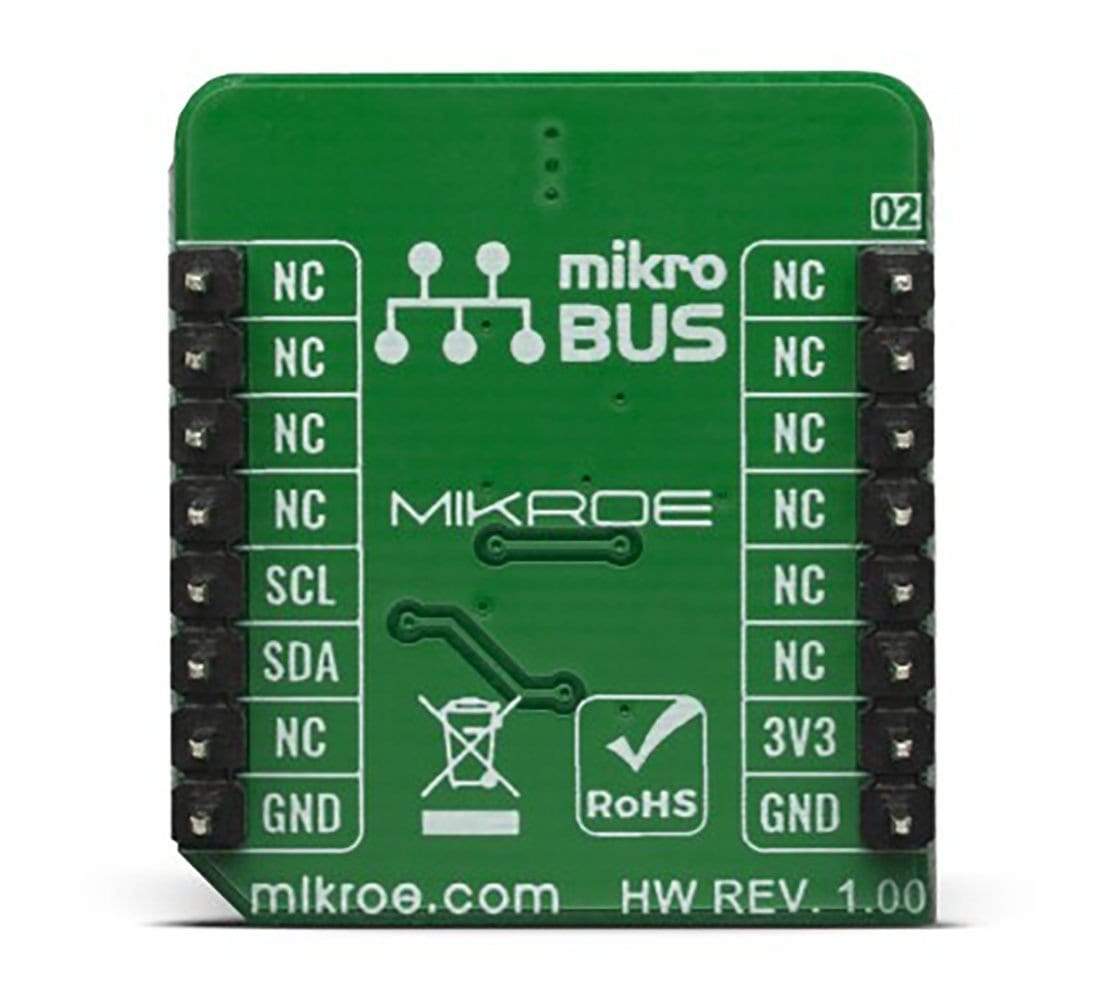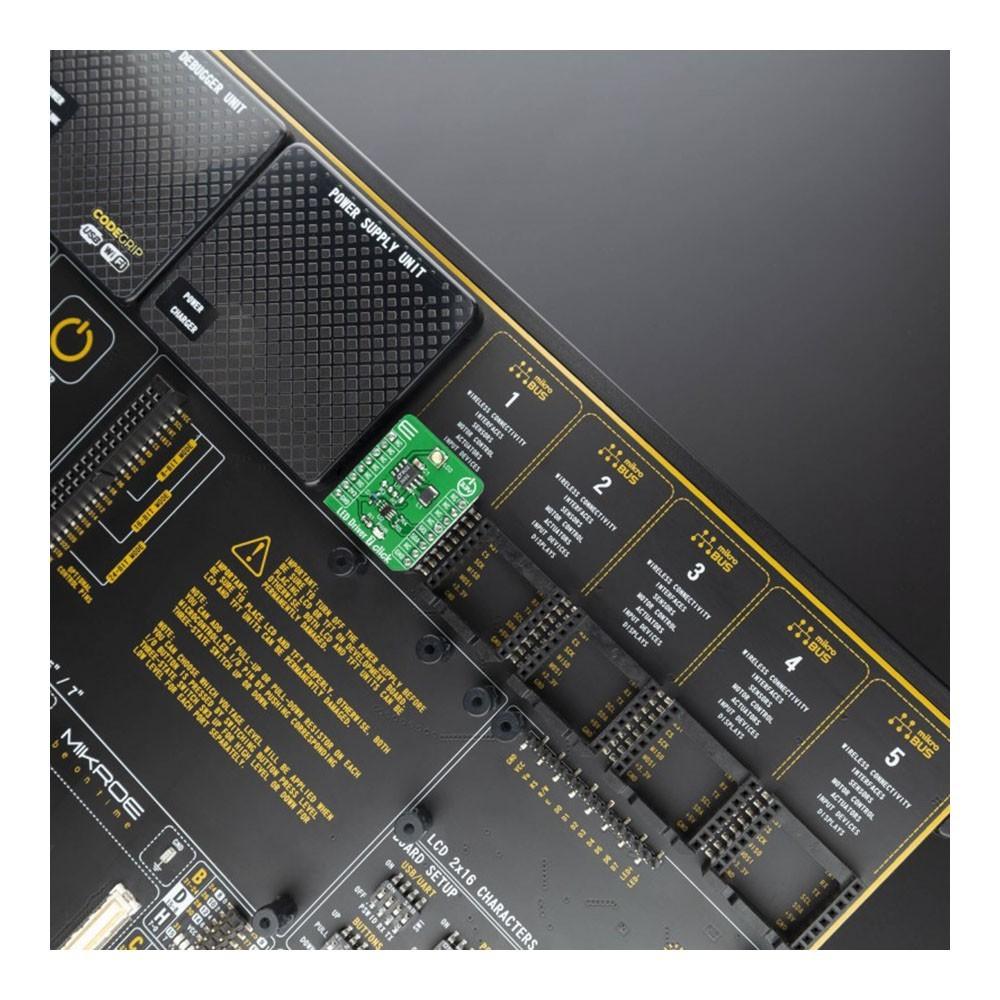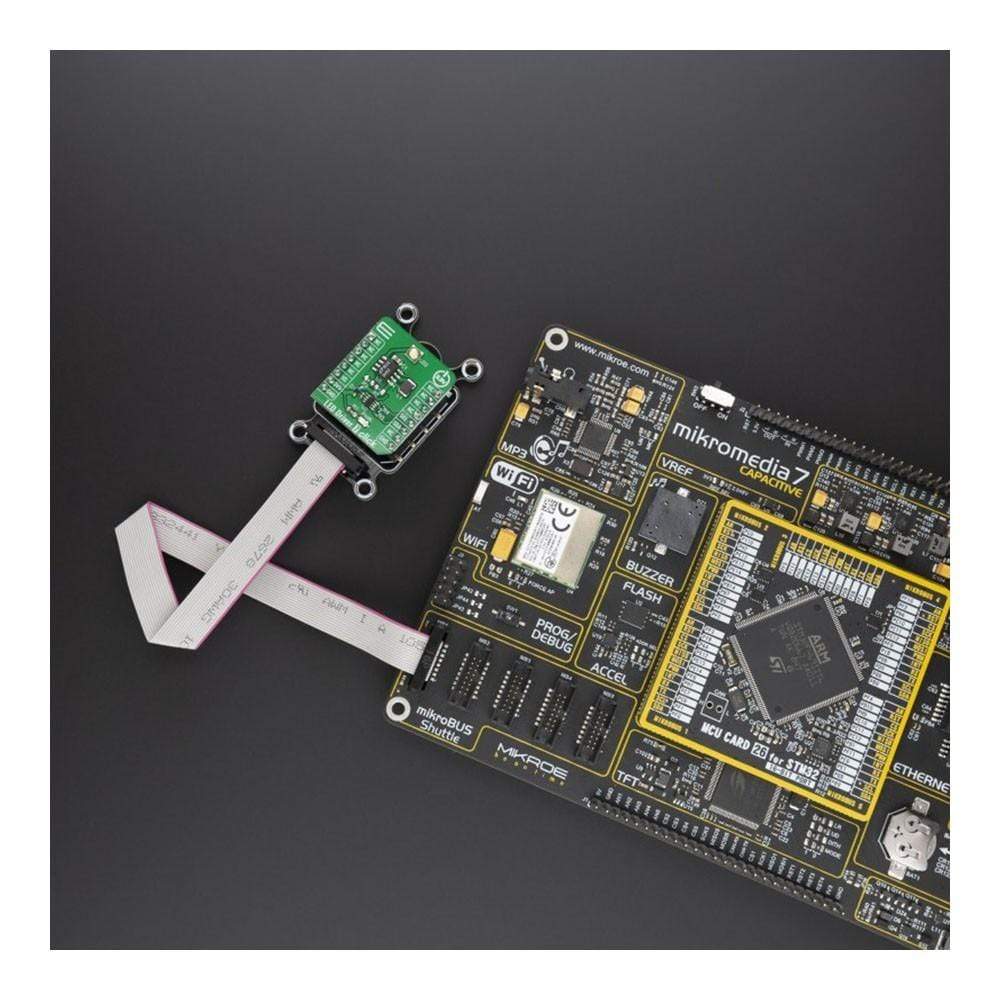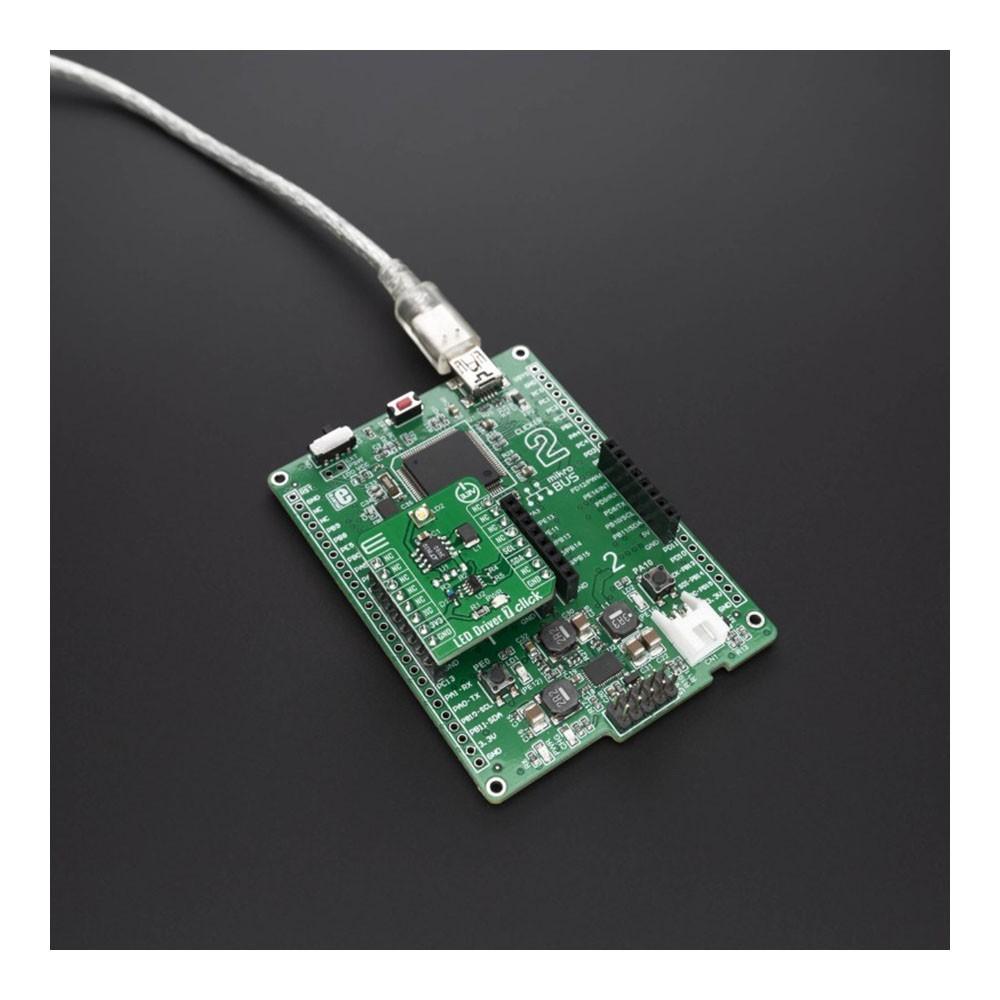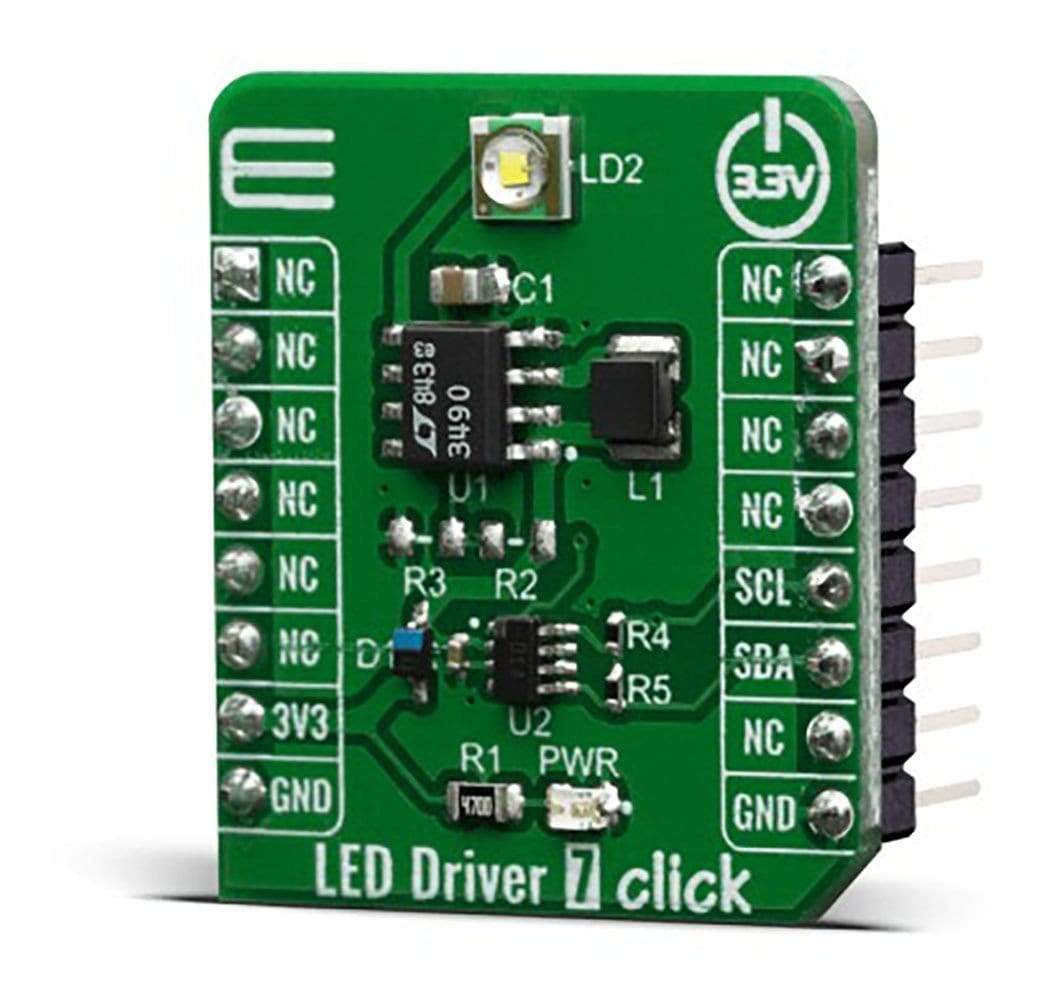
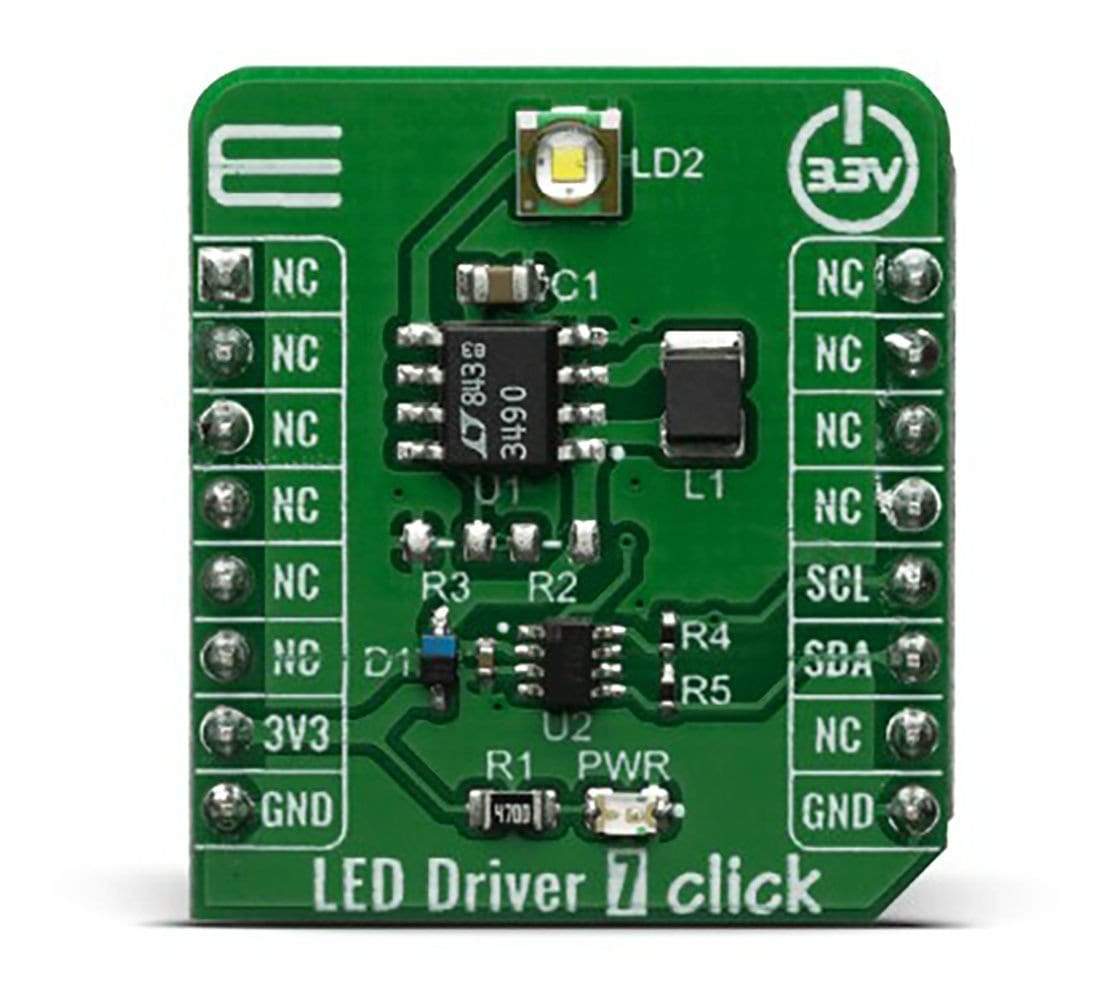
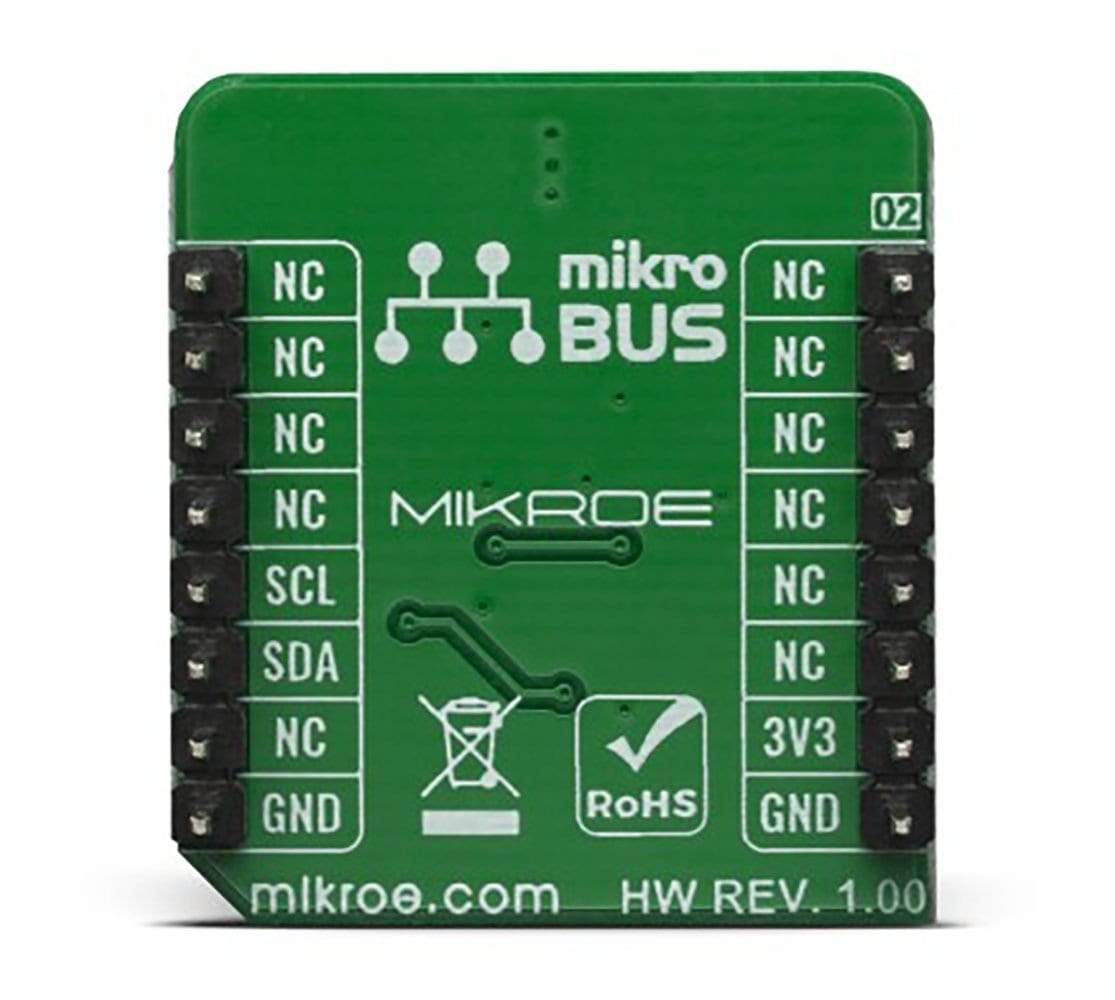
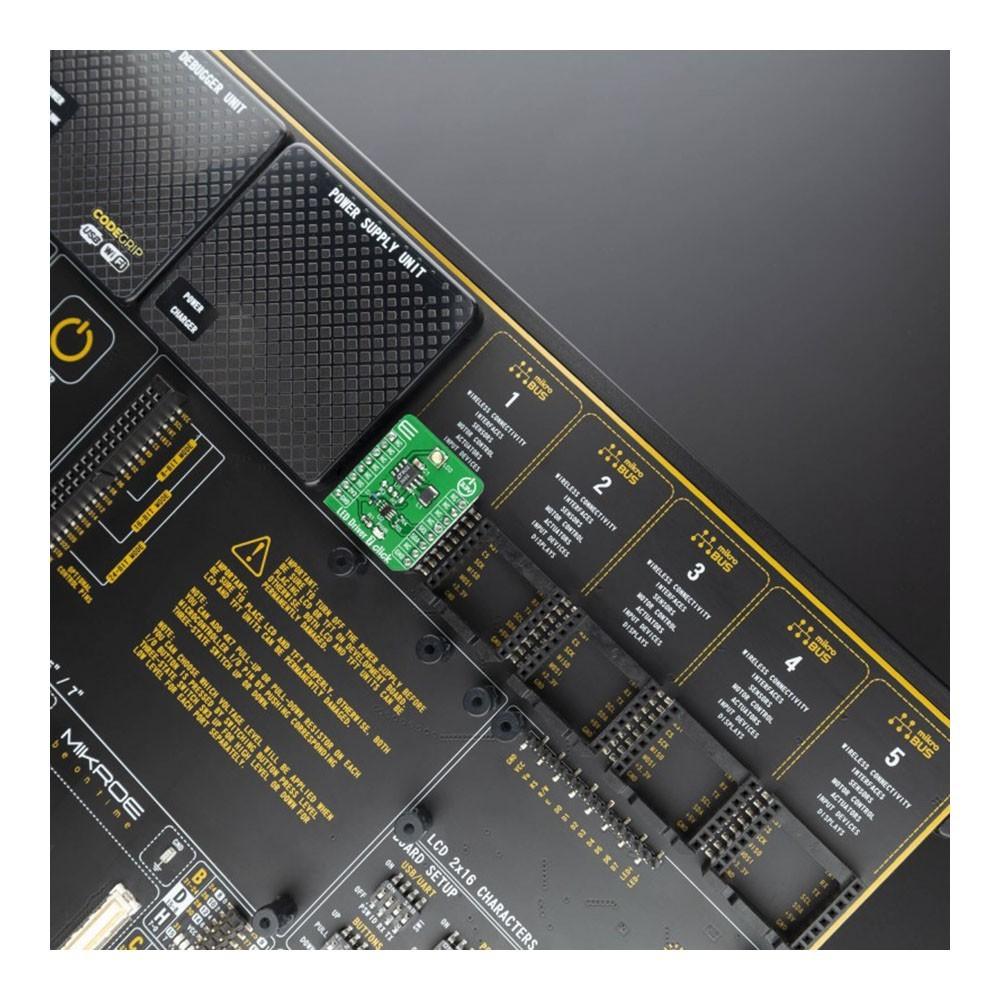
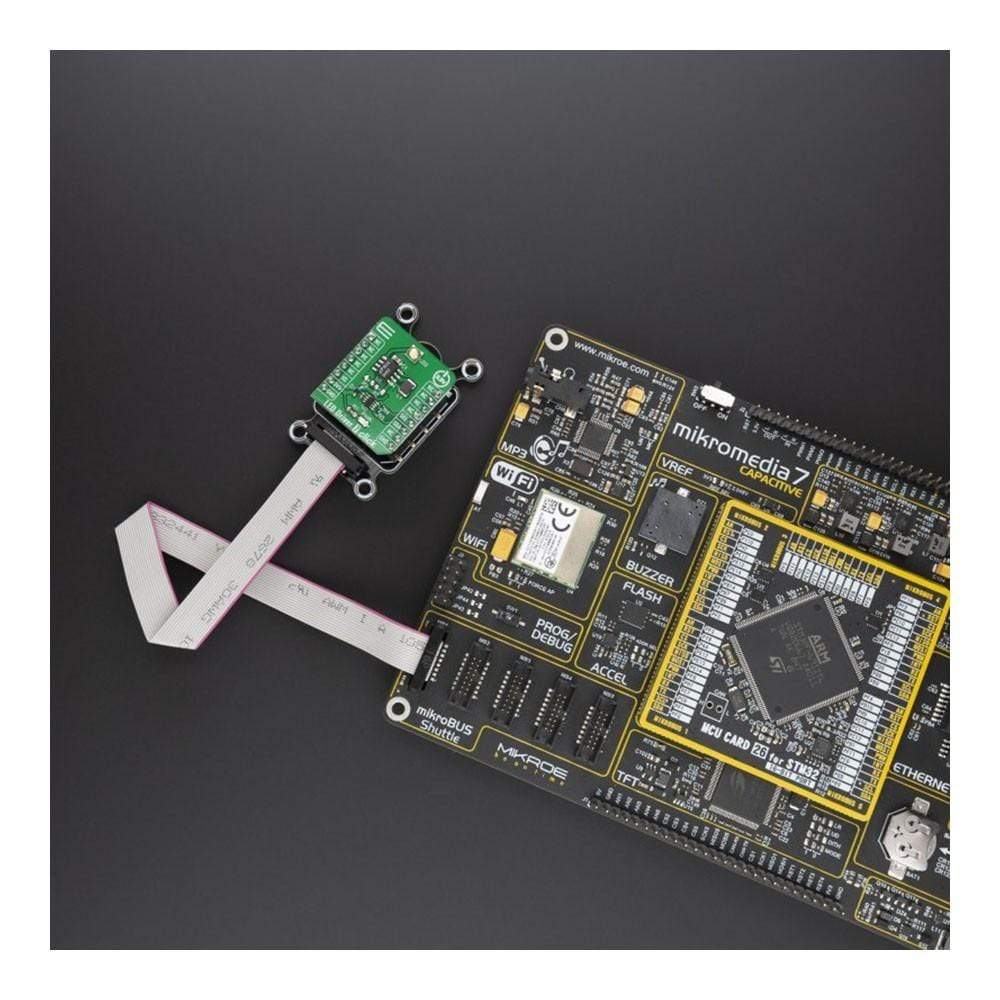
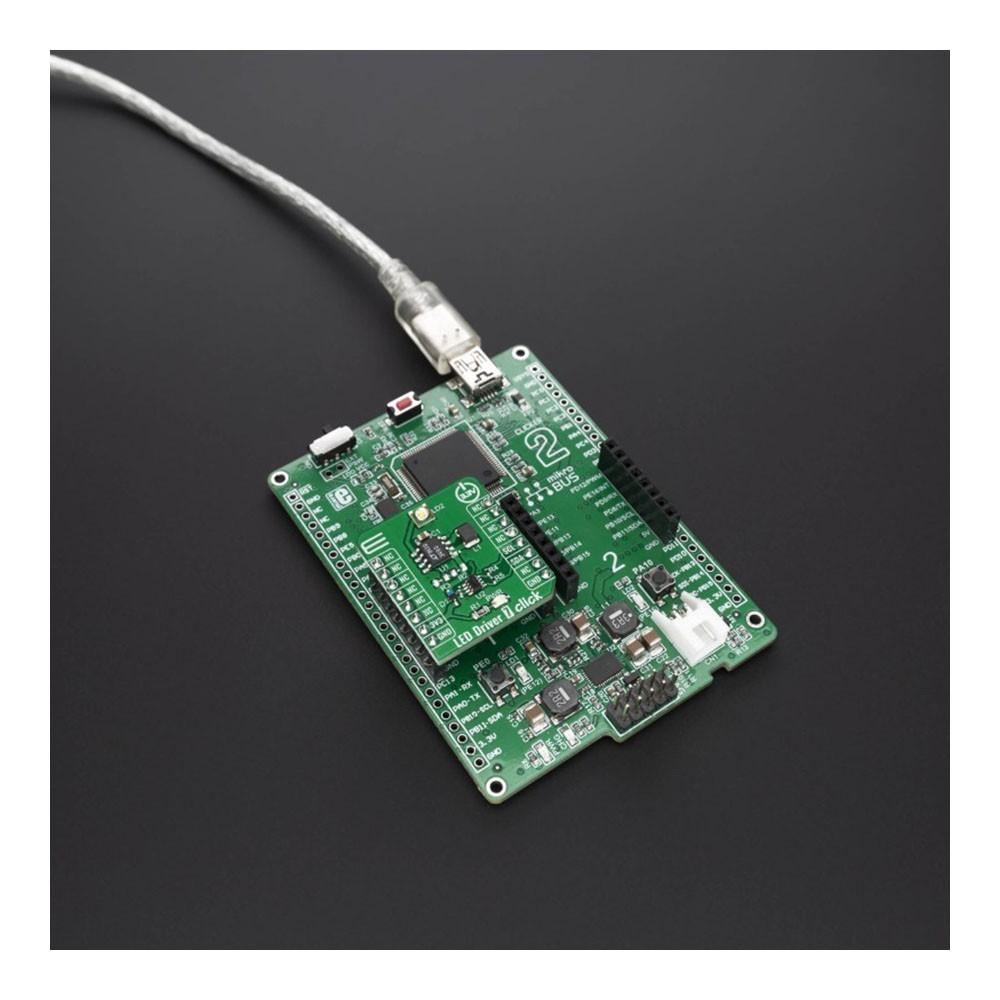
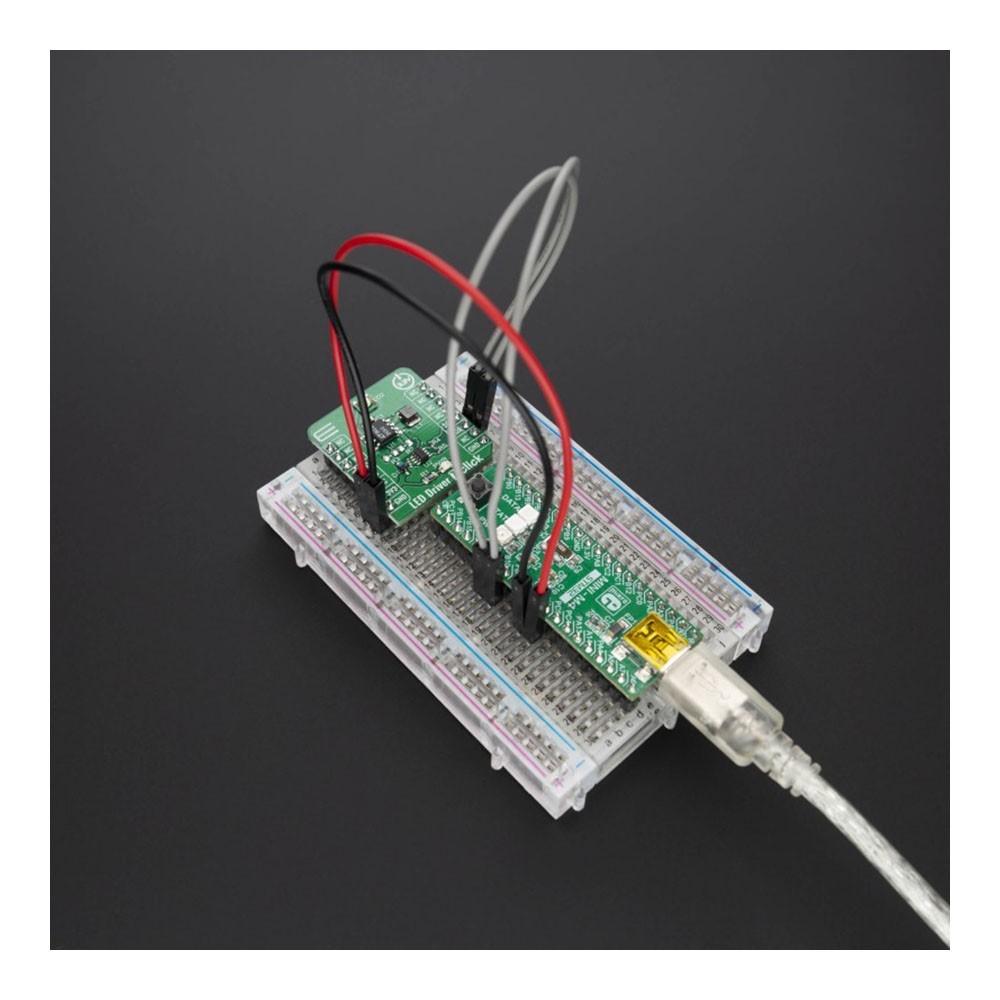
Overview
The LED Driver 7 Click Board™ is equipped with the LTC3490, single-cell 350mA LED driver from Analog Devices. The LED Driver 7 Click Board™ can be used for portable lighting, rechargeable flashlights, system calibrations, electronics level settings, automotive electronics adjustments, mechanical trimmers and potentiometer replacements. The LED drive current can be reduced by changing the voltage on the CTRL/SHDN pin with AD5171, a 64-position OTP digital potentiometer from Analog Devices (ADI).
Downloads
Das LED Driver 7 Click Board™ ist mit dem LTC3490, einem einzelligen 350-mA-LED-Treiber von Analog Devices, ausgestattet. Das LED Driver 7 Click Board™ kann für tragbare Beleuchtung, wiederaufladbare Taschenlampen, Systemkalibrierungen, elektronische Pegeleinstellungen, Anpassungen der Automobilelektronik, mechanische Trimmer und Potentiometerersatz verwendet werden. Der LED-Antriebsstrom kann durch Ändern der Spannung am CTRL/SHDN-Pin mit AD5171, einem 64-Positionen-OTP-Digitalpotentiometer von Analog Devices (ADI), reduziert werden.
| General Information | |
|---|---|
Part Number (SKU) |
MIKROE-3917
|
Manufacturer |
|
| Physical and Mechanical | |
Weight |
0.016 kg
|
| Other | |
Country of Origin |
|
HS Code Customs Tariff code
|
|
EAN |
8606018719068
|
Warranty |
|
Frequently Asked Questions
Have a Question?
Be the first to ask a question about this.



